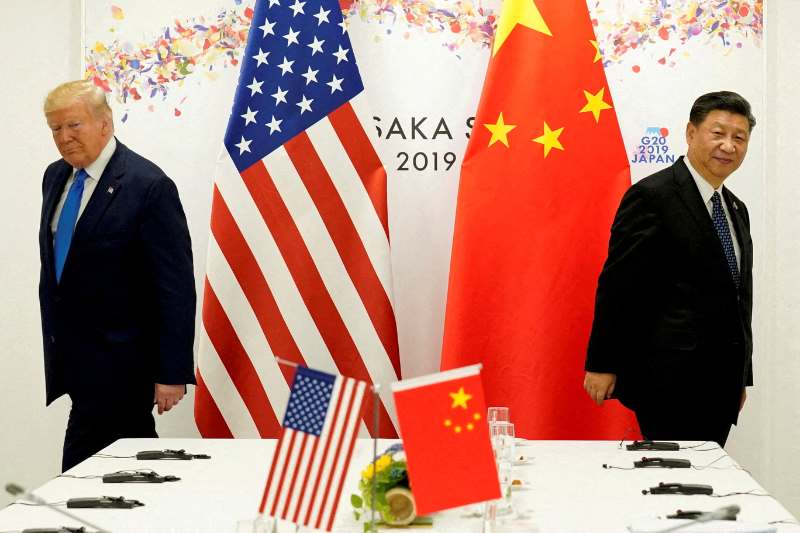
US-China Trade Deal 2025: What You Need to Know
The US-China Trade Deal 2025 is making headlines, and for good reason. This agreement between the world’s two largest economies brings new hope for global trade. With both nations easing tensions and agreeing to tariff reductions, businesses and investors alike are watching closely. But what exactly does this trade deal mean for the global economy? Let’s break it down.
In 2025, the US and China finally reached a long-awaited trade deal. After years of trade wars, both sides agreed to reduce tariffs, making it easier for businesses to operate across borders. The deal includes several important provisions that could reshape the future of international trade.
At its core, the US-China Trade Deal 2025 involves significant tariff reductions. The US is lowering its tariffs on Chinese goods from 145% to 30%. In return, China is cutting its tariffs on US imports from 125% to 10%. These cuts are a sign of both nations’ willingness to cooperate and reduce trade barriers.
One of the most immediate benefits of this deal is the relief it brings to businesses. With tariffs being lowered, companies that rely on imports and exports between the US and China can now breathe easier. Manufacturers in the US who source raw materials from China will face lower costs. Similarly, Chinese companies importing American goods, such as agricultural products and technology, will also benefit from lower tariffs.
For American farmers, the deal is especially important. With tariffs on agricultural exports to China being reduced, US farmers may see increased demand for their products. Chinese consumers will have greater access to high-quality US goods, boosting sales in key sectors.
The US-China Trade Deal 2025 has already had a positive effect on the stock market. News of the deal caused major stock indices, such as the Dow Jones and the S&P 500, to surge. Investors were optimistic about the long-term economic stability that this deal could provide.
When tariffs are reduced, businesses can plan for the future with more certainty. Companies in industries such as technology, agriculture, and manufacturing are set to benefit from the deal’s provisions. This is why the stock market is reacting so positively—investors believe that reduced trade tensions will lead to higher profits for companies, particularly those that do business in China.
While the deal provides short-term benefits, it also sets the stage for future cooperation between the US and China. Both nations have agreed to continue negotiations on issues such as intellectual property protection, market access, and technology transfer. This ongoing dialogue could lead to more balanced trade relations and reduce the risk of future trade wars.
For global markets, the stability of US-China relations is crucial. If this deal is successful, it could pave the way for more agreements between the two countries, helping to promote global economic growth. However, experts warn that while tariffs may be reduced, there are still other challenges to overcome, particularly regarding China’s economic practices and policies.
Consumers in both the US and China will also see the effects of the trade deal. As businesses lower their costs due to reduced tariffs, the savings may be passed on to consumers in the form of lower prices. For example, products like electronics, clothing, and vehicles that are imported from China may become more affordable in the US.
In China, US-made goods could also become cheaper. Products like soybeans, meat, and technology from the US will likely see increased demand as tariffs are lowered. For consumers in both countries, this means access to a broader range of affordable, high-quality products.
The US-China Trade Deal 2025 is not just important for the US and China—it has global implications. Both countries are major players in the global economy, so any changes in their trade policies affect markets around the world. By reducing tariffs, the US and China are sending a message to the global community that they are committed to open, fair trade.
This deal could also influence trade agreements in other regions, such as Europe and Asia. Countries that rely on trade with the US and China will closely follow the outcomes of this deal. A successful US-China trade agreement could encourage other nations to negotiate similar agreements, potentially leading to a more interconnected global economy.
While the US-China Trade Deal 2025 represents a significant step forward, the path to a fully balanced trade relationship is still unfolding. In the coming months and years, both countries will continue to work on resolving outstanding issues related to intellectual property, technology, and market access.
The US and China have agreed to a temporary tariff reduction period, but further negotiations are expected. Experts believe that it could take several years to address all of the complex issues in the trade relationship. However, this deal is a clear indication that both countries are willing to engage in meaningful discussions, which bodes well for the future of global trade.
The US-China Trade Deal 2025 is a crucial development for the global economy. By reducing tariffs and easing trade tensions, both the US and China have opened the door for more cooperative relations. This deal is already having a positive impact on businesses, investors, and consumers, and it could lead to a more stable and prosperous global economy in the years to come.
As the world watches closely, the success of this trade agreement will serve as a model for future trade deals. With continued cooperation, the US and China could pave the way for more open and balanced international trade, benefiting countries and businesses worldwide.